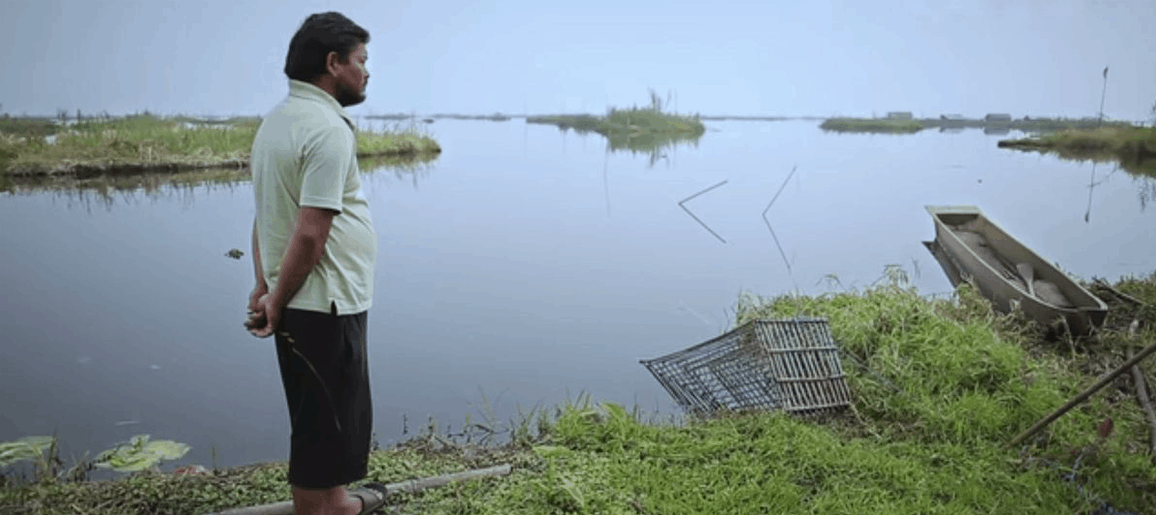This week, I was treated to a screening of the film Loktak Lairembee (translated as Lady of the Lake), which I believe challenges us to think about the nature of pollution.
This film is a drama centered on a group of fishing families in Manipur, India, who live on floating islands (also known as Phumdi) on Lake Loktak. These families are continuously threatened by government authorities, who blame them for polluting the lake. As a result, they are in danger of losing their homes, and they occasionally hold meetings to discuss how to defend themselves. During one these meetings, there is a monologue, delivered quite effectively, that sums up the level of hardship that these people suffer, and it’s quite a hard scene to watch.
Enter our main character, Tomba, whose previous hut was burned down by authorities. Tomba, having been traumatized by the incident, has concealed himself inside his new home, too afraid of history repeating itself. His wife, despite her own personal fears and frustration, sympathizes with him and struggles to make a living for the two of them, single-handedly. In addition, Tomba is seeing hallucinations of a mysterious woman near his hut, who is believed to be the titular “Lady of the Lake,” their people’s protector.
On one of the rare days when Tomba leaves his hut, he accidentally discovers a gun, possibly belonging to one of the authority figures, hidden in the landmass. His wife is appalled by the gun, because of what the authorities would do if they discovered it, and demands that Tomba get rid of it. Tomba, on the other hand, grows accustomed to the gun, and keeps it concealed. This creates tension in his household, which, itself, can be seen as a kind of pollution.
Although we generally associate the word pollution with the environment, the film seems to be saying that man’s obsession with power is also contaminating. The gun that Tomba finds gives him a sense of power, but it also distances him from his family. His wife’s support for him is withdrawn when the gun is introduced, because she fears the trouble it will bring, and trusts, instead, in the Lady of the Lake to protect them. So, Tomba’s idea of using the gun to regain control over his life is comforting for him, but it comes with a price. In the final scene of the film, the camera lingers on Tomba’s gun at the bottom of the ocean. There, it no longer emotionally pollutes Tomba’s family, but it has now become a physical pollutant of the lake.
Loktak Lairembee is the debut feature of documentary filmmaker Haobam Puban Kumar, and it is a strong start for his career. He films many scenes of the fishermen’s daily routines in long, unedited takes, with the camera on a dolly floating across the water. This approach is effective because the lack of cuts helps convey authenticity and generates atmosphere. Overall, it is an intriguing film that has a lot to say about the corruption of man. Clocking in at 70 minutes, it may be a little short, but nevertheless succeeds in conveying its message, while also featuring some fine cinematography and good performances from its actors. Check it out if you can!
We screened the film at India Kaleidoscope Film Festival Explores at Museum of the Moving Image (MoMI).
